Carer assisted stretches
Before completing the exercises below, please consult with your physiotherapist to ensure the exercises are appropriate for your condition. Please seek further advice if you experience any adverse effects
Lower and upper limb contractures are a common impairment in neurological conditions, this may be due to changes in muscle tone or weakness preventing the joint being moved through full range of movement.
Contractures can cause mobility limitations, restricted movement of joints, loss of function for activities of daily living and discomfort.
It is important to try and maintain the range of movement at your joints by either actively stretching your muscles or asking someone to assist you with these. In the case of conditions when one side of your body is affected, if possible use your non affected arm to assist with upper limb stretches.
Carer assisted stretches should ideally be completed on a daily basis. Please follow the instructions below when assisting with these stretches.
-
Always ensure the patient is comfortable prior to starting stretches.
-
It is important that the patient understands what you are about to do and why.
-
Remind the patient to inform you if any pain is felt at any time. Keep observing their face for feedback, this is especially important when someone is unable to verbalise pain.
-
Stretches should be made until you feel an end-point resistance, pain is indicated or the patient informs you to stop.
-
Stretches should be completed as demonstrated by the Therapist. Ensure that you are aware of your own posture when completing the stretches. Avoid over stretching, twisting or bending.
You can print and download a copy of the following stretches here
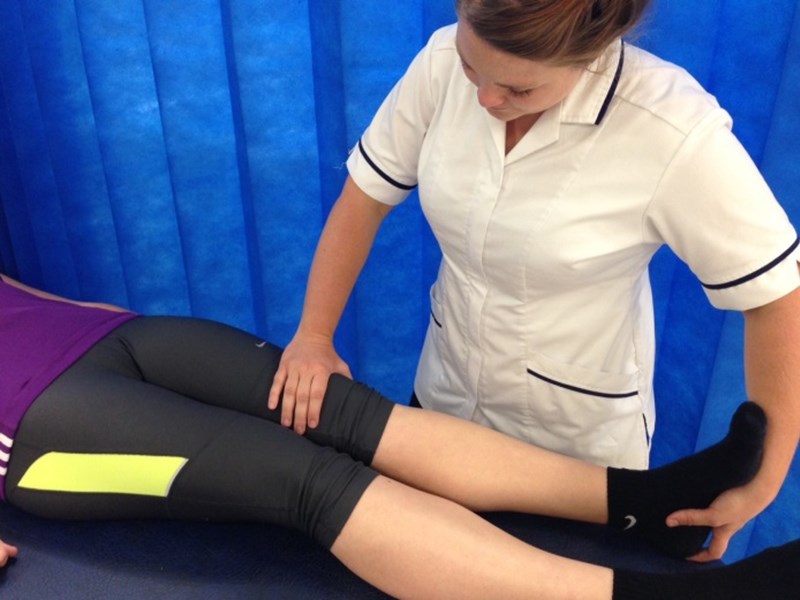
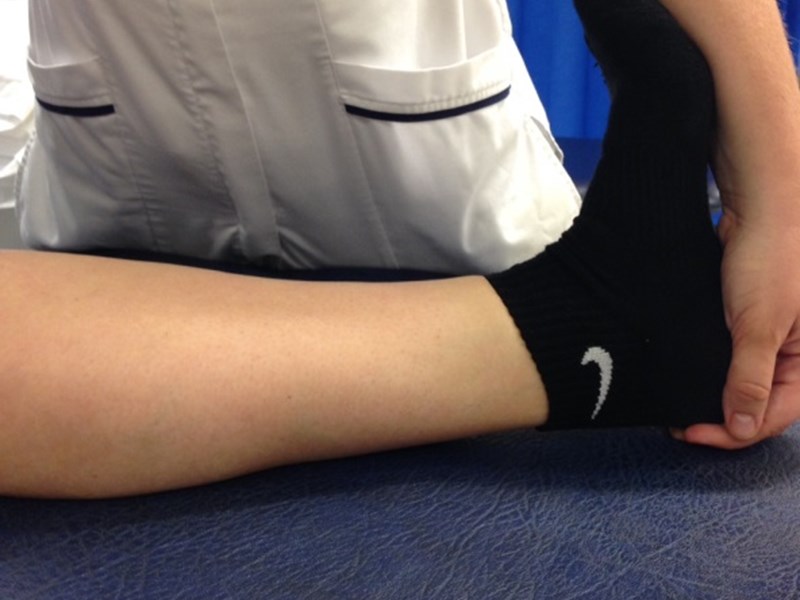
Calf Stretch
-
Carer supports the affected leg by cupping the heel and holding above the patient’s knee
-
Slowly move the foot up (towards the ceiling) until you start to feel resistance. Try to keep the leg straight.
-
Hold stretch for 15 -30 seconds, repeat 3 times
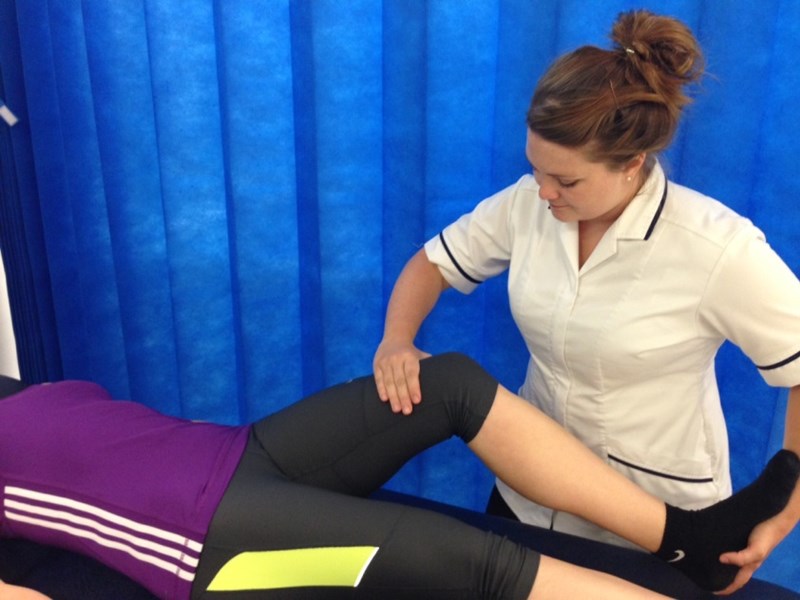
Hamstring stretch while lying
-
Cup the affected limb under the patients heel and knee
-
Slowly straighten the leg until you start to feel resistance
-
Hold stretch for 15 -30 seconds, repeat 3 times
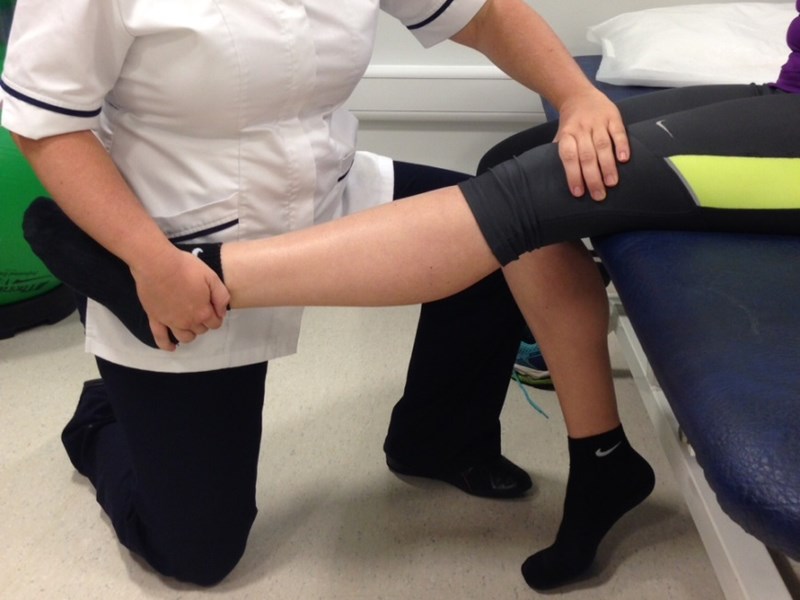
Hamstring stretch while sitting
-
Hold under the patient's heel and above the knee.
-
Slowly straighten the knee until you start to feel resistance
-
Hold stretch for 15 -30 seconds, repeat 3 times

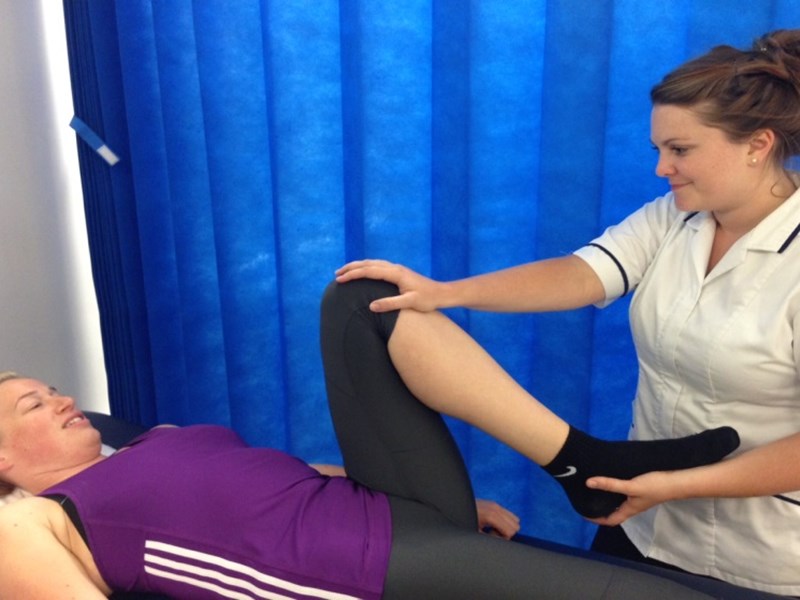
Hip/ Knee Flexion Stretch
-
Carer supports the affected leg by cupping the heel and supporting above the knee.
-
Slowly bend the patient’s knee towards the chest until you start to feel resistance
-
Hold stretch for 15 -30 seconds, repeat 3 times
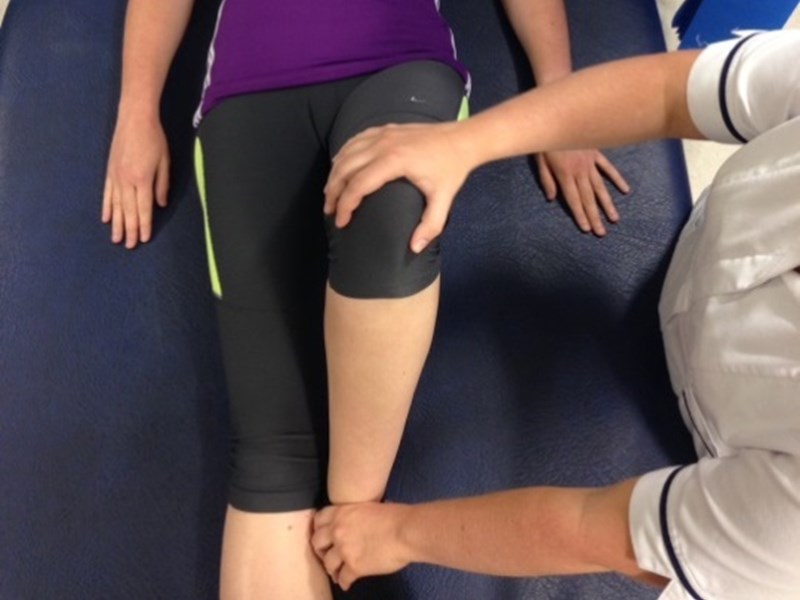
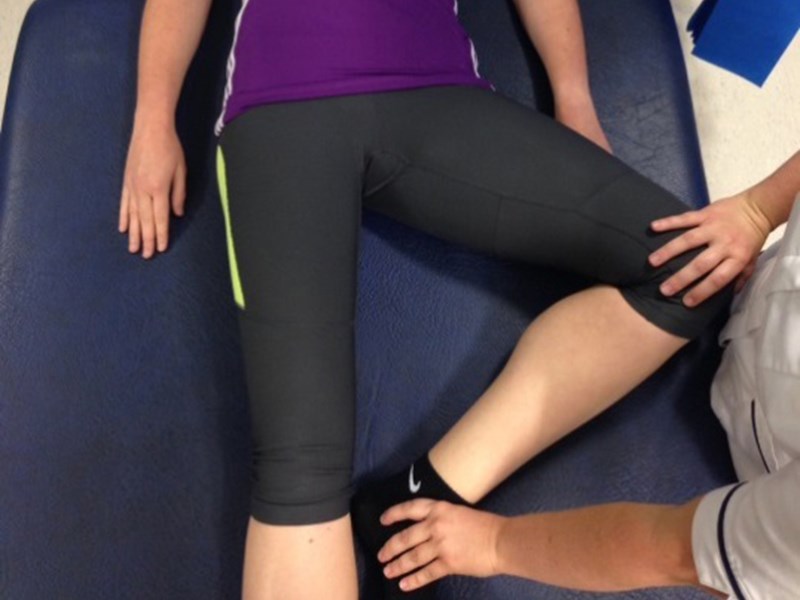
Hip Adductor Stretch
• Carer bends knee up and places foot flat on the bed
• Slowly let the knee drop out to the side, keep supporting the leg. Gently stretch the leg until you start to feel resistance
• Hold stretch for 15 -30 seconds, repeat 3 times
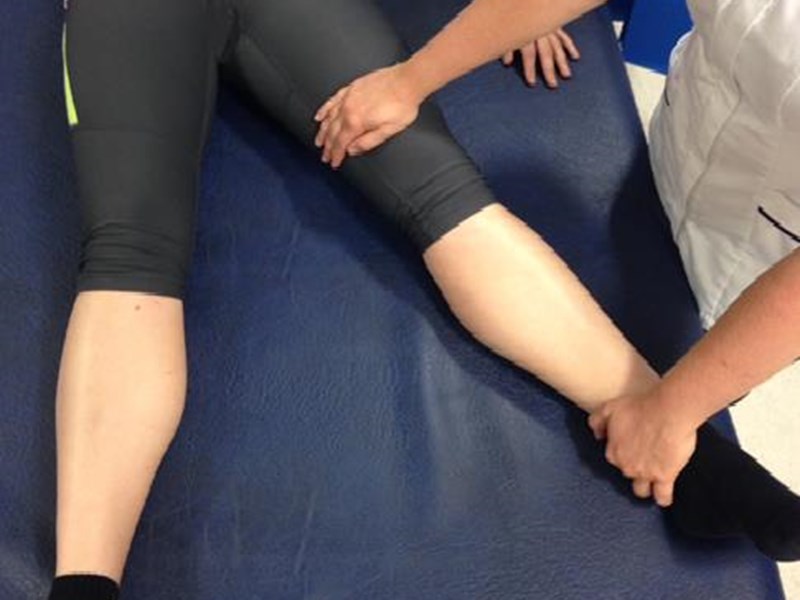
Hip Abduction Stretch
• Support the patient’s leg by placing your hand on the inside of the leg above the knee and underneath the ankle.
• Keeping the leg straight, slowly bring it out to the side until you feel resistance.
• Hold stretch for 15 -30 seconds, repeat 3 times
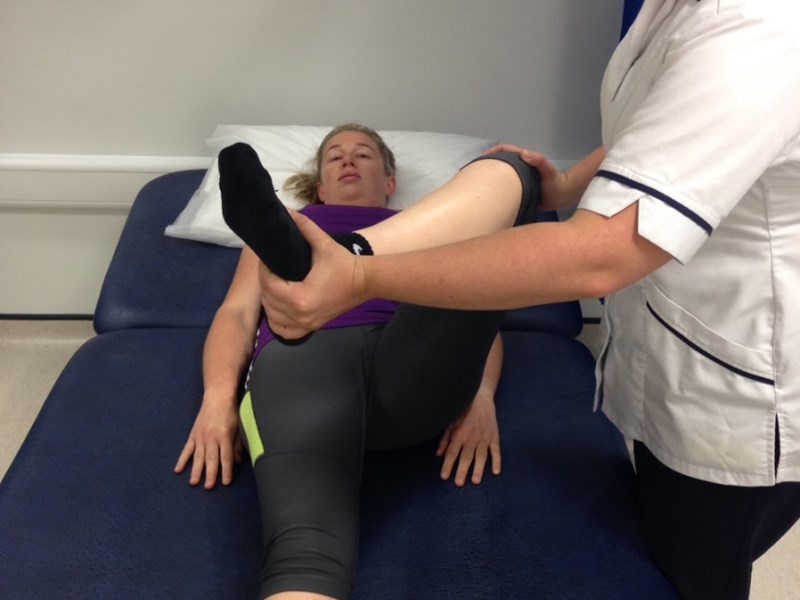
Hip External Rotation Stretch
• Support the patient’s leg by placing one hand above the knee and the other underneath the foot.
• Bend the hip to a 90 degree angle.
• Keep the knee still, slowly bring the foot inwards until you feel resistance.
• Hold stretch for 15 -30 seconds, repeat 3 times
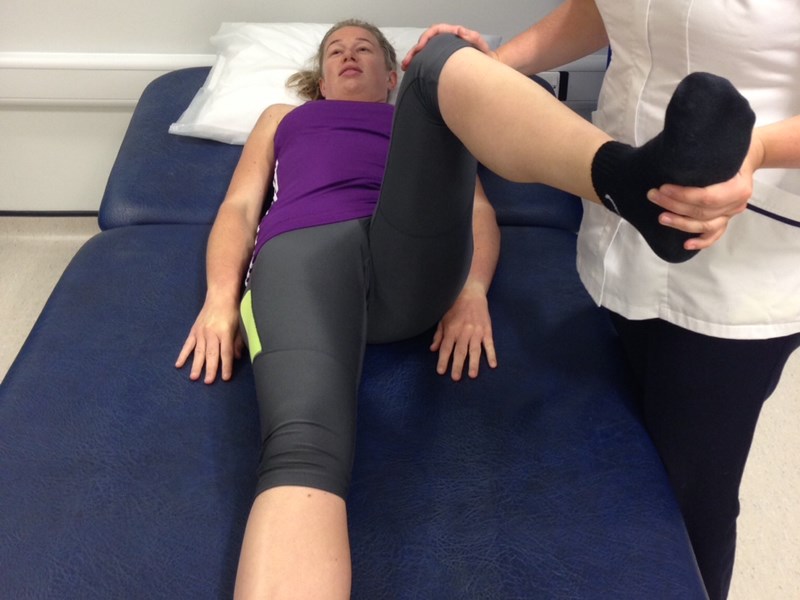
Hip Internal Rotation Stretch
• Support the patient’s leg by placing one hand above the knee and the other underneath the foot.
• Bend the hip to a 90 degree angle.
• Keep the knee still, slowly bring the foot outwards until you feel resistance.
• Hold stretch for 15 -30 seconds, repeat 3 times

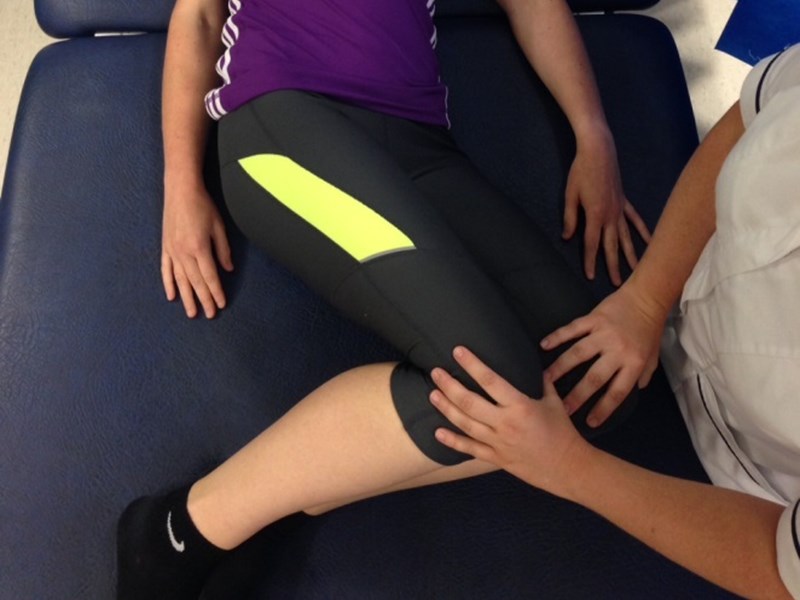
Trunk Stretch
-
Bend the patient’s knees so that the feet remain flat on the bed.
-
Support the legs at the knees and then slowly roll the knees from one side to the other
-
Only push the knees until you start to feel resistance.
-
Hold stretch for 15 -30 seconds, repeat 3 times
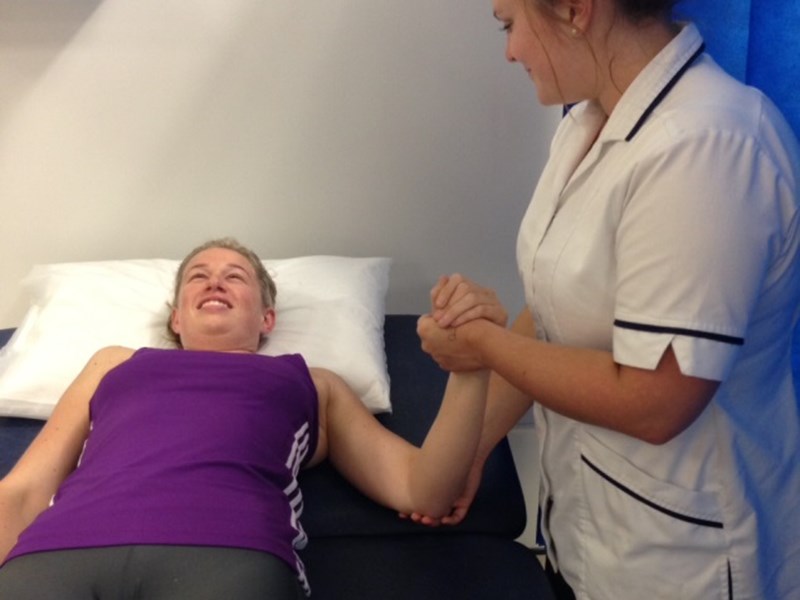
Shoulder Abduction
-
Support the patient's arm under the elbow and hand.
-
Slowly take the arm away from the body until you start to feel resistance.
-
Hold stretch for 15 -30 seconds, repeat 3 times

Shoulder flexion stretch
• Support the patient's arm by holding by elbow and wrist.
• Keeping the arm straight, gently lift the arm up as far as is comfortable for the patient.
• Keep the arm close to the patient.
• Hold stretch for 15 -30 seconds, repeat 3 times
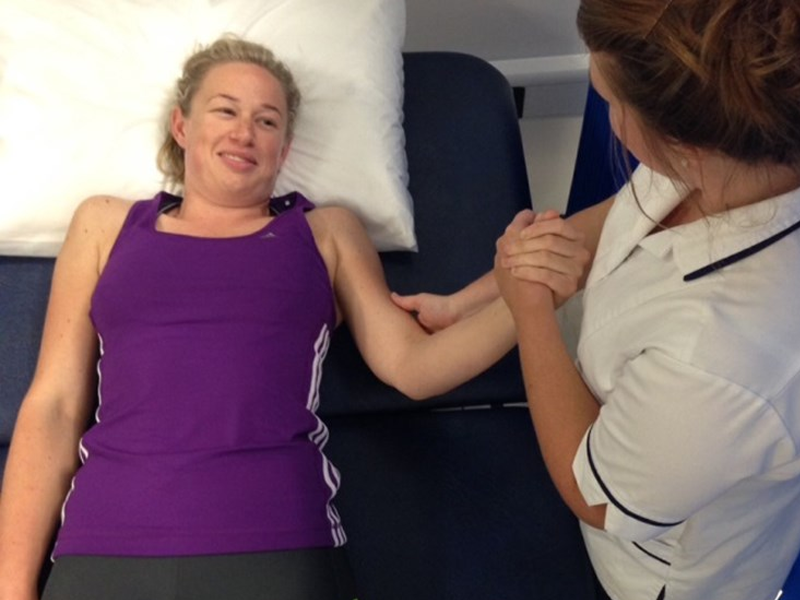
Shoulder External Rotation
-
Carer supports the arm by holding the elbow and the hand
-
Keeping patient elbow by their side and bent at 90 degrees, slowly move hand away from patients body towards the bed. Only take arm as far as comfortably possible.
-
Hold stretch for 15 -30 seconds, repeat 3 times
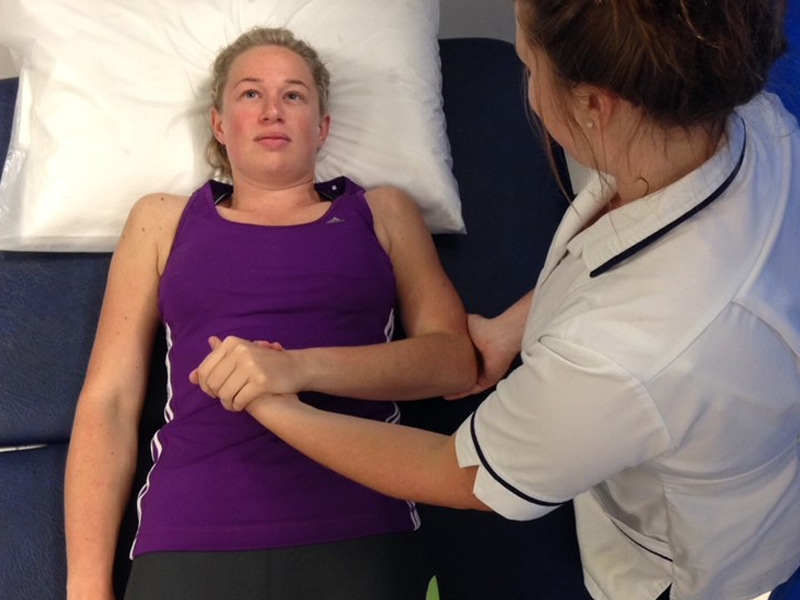
Shoulder internal rotation stretch
-
Support the patient's elbow and wrist
-
Keeping patients elbow by their side slowly move the patient's hand towards their body as far as possible
-
Hold stretch for 15 -30 seconds, repeat 3 times
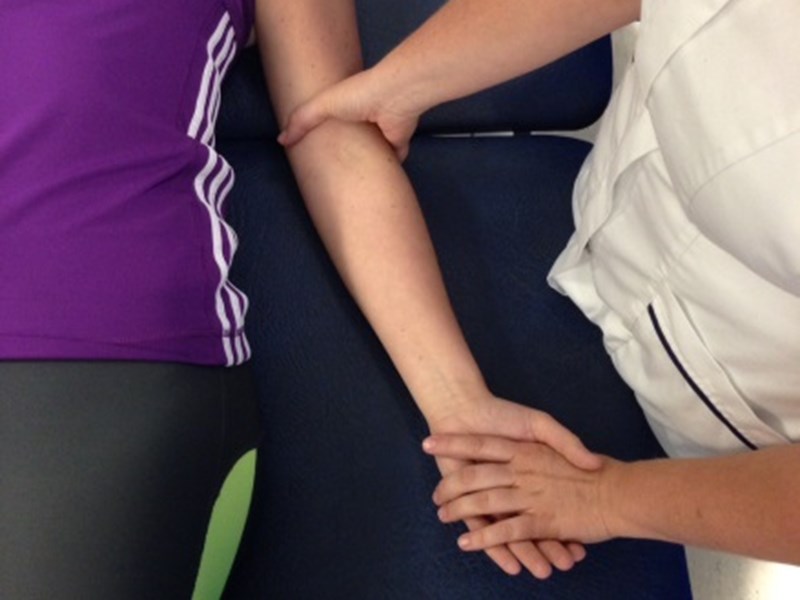
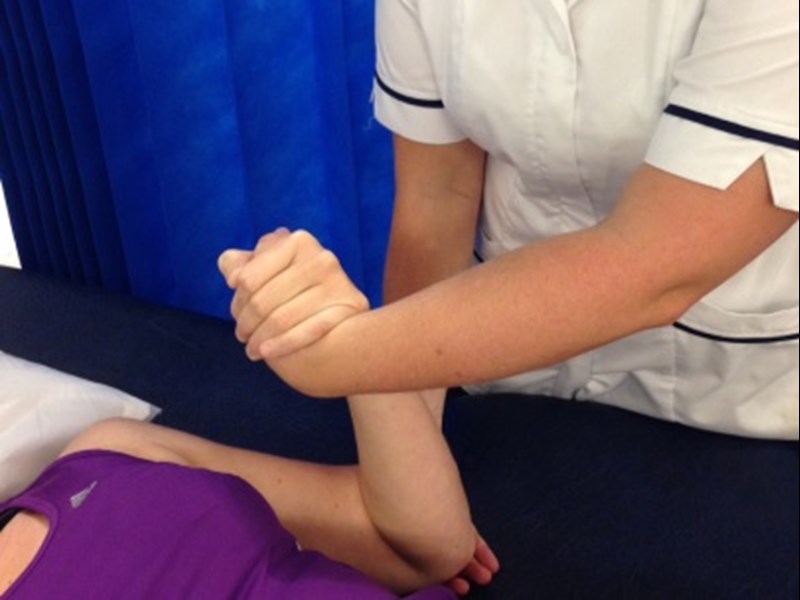
Elbow stretch
• Carer supports affected arm by supporting wrist and elbow
• Carer should slowly begin to bend elbow towards shoulder as far as possible
• Hold stretch for 15 -30 seconds
• Begin to then slowly straighten arm as far as possible, again holding for seconds
• Hold stretch for 15 -30 seconds, repeat 3 times
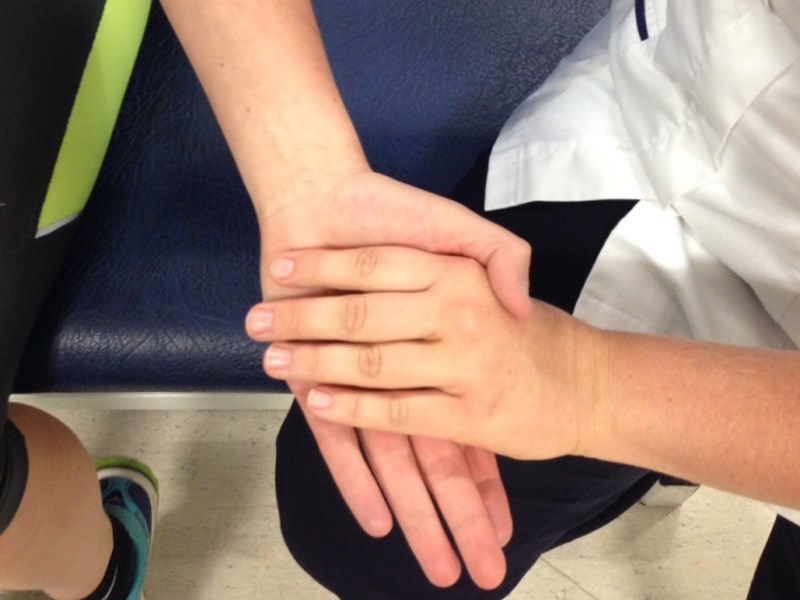

Wrist pronation/supination stretch
• Carer supports elbow and hand
• Slowly rotate patient's forearm so palm is facing the ceiling
• Then rotate forearm so patients palm is facing the floor
• Hold each stretch for 15 -30 seconds, repeat 3 times
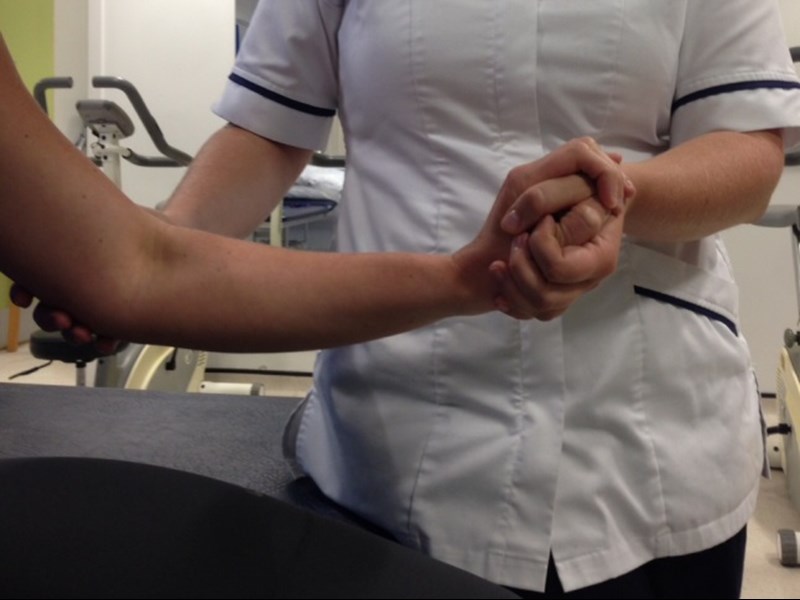
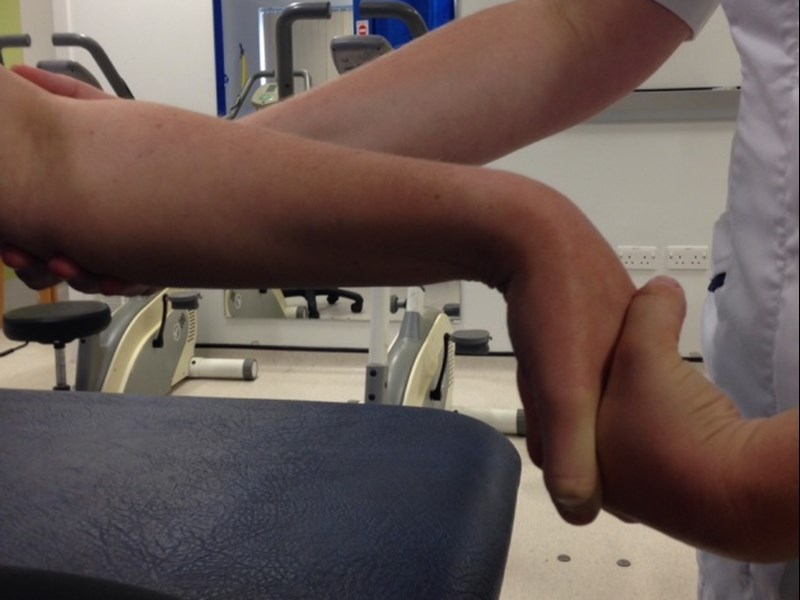
Wrist flexion/ extension stretch
• Carers supports elbow and hand
• Slowly move hand down to bend wrist as far as comfortable
• Then slowly move hand up to extend wrist as far as possible
• Hold each stretch for 15 -30 seconds, repeat 3 times
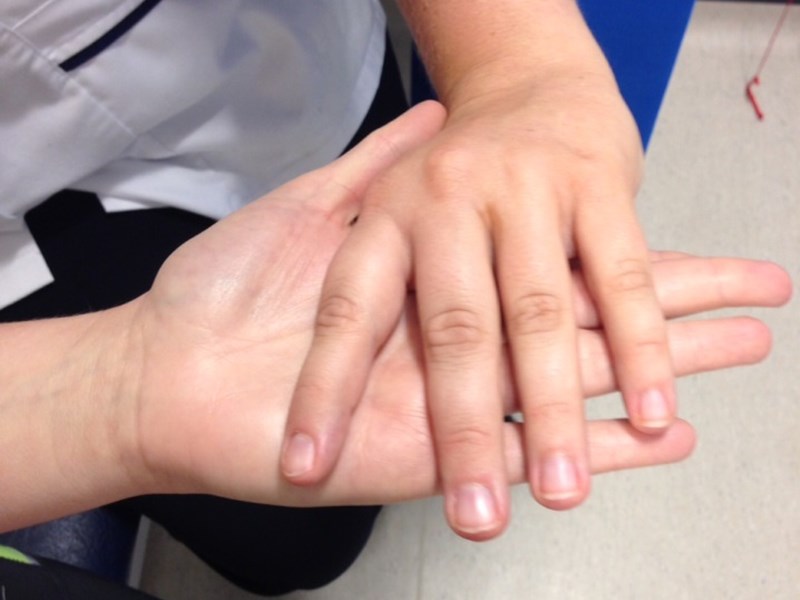
Hand stretch
-
Carer gently opens affected hand by slowly stretching fingers out
-
Continue until end point resistance is felt or pain reported
-
Encourage patient to do this stretch themselves with unaffected hand if possible
-
Hold stretch for 15 -30 seconds, repeat 3 times